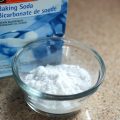The human body has been a fascination with scientists since the birth of life. In fact, the very science of life is what drives biologists to study its nature. The consideration is that if growth is discerned in an organism, even at a cellular level, it is alive.
The point of this fact is that we come unto life into a growing process. Once we have stopped growing and our bodies stop producing the hormones and mechanisms of growth, we do not stop changing.
Although the aging process of all biological creatures is considered a separate phase, it can still be viewed as a continuum of the aging process. The only difference is that it is a degrading process influenced by outside factors and occupational conditioning. The body grows older until it ceases to change and ultimately gives in to the inevitable.
Discoloration of pigmentation is a common degradation that occurs because of aging growth, seen in both skin and hair.
Can Skin Color Change With Age?
The known fact, observed by physiologists and dermatologists, is that discoloration can occur in the dermis. The skin is considered an organ, as much as the lungs, heart, liver, and other body parts. The most significant evidence presented to confirm this is the perspiration system of the skin.
We use this mechanism to regulate body temperature, detoxify the body, and absorb Vitamin D from sunlight, to name a few of its purposes. Like every other organ, it is subjected to the conditions and influences of its host. Aging in the skin occurs because of two major known factors. These influences occur in every human and are known to cause discoloration of the skin.
The surface of the dermis is made of pigments. Pigments can change color and are determined by genetic discrimination. Everything from environmental influences to dietary changes can cause dermis discoloration. The ability to darken the pigmentation of skin through sunlight exposure has fascinated many, becoming an aesthetic fashion all across the world.
This tanning process is actually how our skin provides us with Vitamin D. The presence of cholesterol in skin cells is exposed to the sun’s ultraviolet B range rays.
The light provides the energy needed for Vitamin D synthesis that breaks down cholesterol and extracts Vitamin D. The other range of ultraviolet rays causes darkening of pigments and conditions the skin through it. Too much sunlight exposure is one of the most significant aging causes.
It is counted as an environmental factor called photoaging. Other aging factors in the skin include chronological influences and dietary conditioning. Of all the factors, most discoloration in the skin is aggressively accelerated by photoaging.
There are plenty of discoloration disorders associated with photoaging of the dermis. You would need an in-depth explanation of each if you noticed anything specific. Take care, and have your self examined by a dermatologist since many aging skin disorders can turn malignant and cause cancer.
The basic answer is yes; your skin can discolor because of aging. In most cases, Caucasians would become paler. Here is why.
What Are the Causes of Aging Skin Discoloration?
The major contributor to aging skin is exposure to sunlight. Dehydration of the skin, paired with the aging process and constant stretching and pulling to conform to your body, is the known cause of wrinkles. The emphasis and presence of wrinkles are greatly aggravated by exposure to the harmful rays of ultraviolet light.
The same processes set in motion by the sun are what drives skin discoloration due to aging factors. Of the cells that make up the biological structure of our skin, approximately 1 to 2% are melanocytes. This epidermal cell is responsible for protecting the skin against the harm of UV exposure.
It goes through many changes in both the growing and aging process. Explaining the in-depth chemical changes of the body and what happens to melanocytes is a little too complicated to describe in layman terms.
The conclusive examination of the dermis in those who experienced aging discoloration was found to have a decreased density presence of melanocytes.
The presence of this epidermal cell is reduced due to exposure to UV rays. It is also reduced chronologically as we age, factored at approximately 8 to 20% every decade after the age of 30. The loss of melanocytes is directly linked to discoloration in the skin. As UV light stimulates melanocyte growth, it also releases other chemicals in the skin.
One chemical known as keratinocytes may play a role in pathogenesis and depigmentation that is seen in photoaged skin. The true mechanism is still under observation, but the cause is linked to UV exposure. The other significant influences in aging, including the causes behind the free radical breakdown of DNA oxidation, are considered only to play minor roles.
The influence of time is also a small factor that causes aging discoloration. In most cases, though, depigmentation is diagnosed because of cumulative intrinsic damage.
Can It Be Treated And Prevented
Skin color changes can be treated to an extent but are considered the inevitable fate of all skin-clad beings. The aging process can be slowed, healed, and even prevented but cannot be eliminated. Damage to the skin, from many factors, including sunlight, can be reversed. It may not be treated entirely, but the presence of skin discoloration can be reduced at the very least.
There are plenty of treatments. Topical creams, scrubs, and spa treatments are some means of applying a remedy. Changing your diet and including better anti-oxidizing and detoxing foods might also help. Dark green vegetables, dark berries, and dark chocolates are all good sources.
These will not only fight the effects by restoring melanocytes but also by providing a rich source of antioxidants. The best prevention available though, is SPF protection.
To effectively eliminate the influences of sunlight damage and photoaging, wear a good, trustworthy sunscreen. If you buy a formulation with a moisturizer, it will be an even more effective guard.
Conclusion
The formation of moles and other skin growths are also considered an aging discoloration of the dermis. These individual symptoms should be examined and treated before turning malignant. If you noticed discoloration in your skin, there are plenty of remedies and treatments, but for the safest option, seek out a dermatologist.
Your skin will discolor and change throughout life, so take precautions and consider your skin an organ. By doing so, you will not only be healthier but more attractive too.





